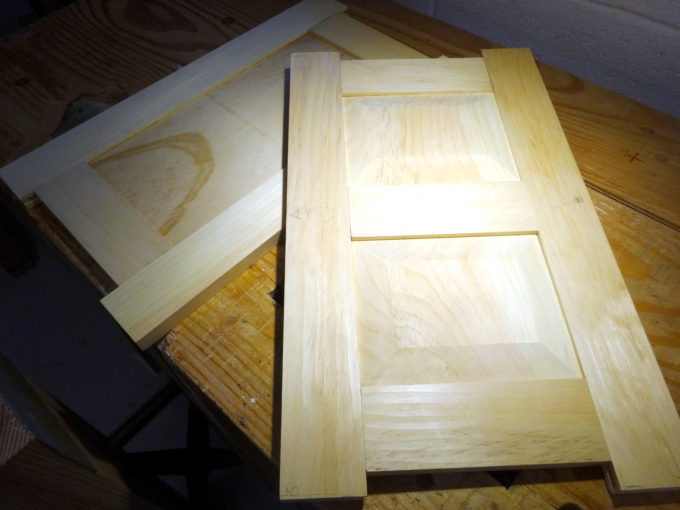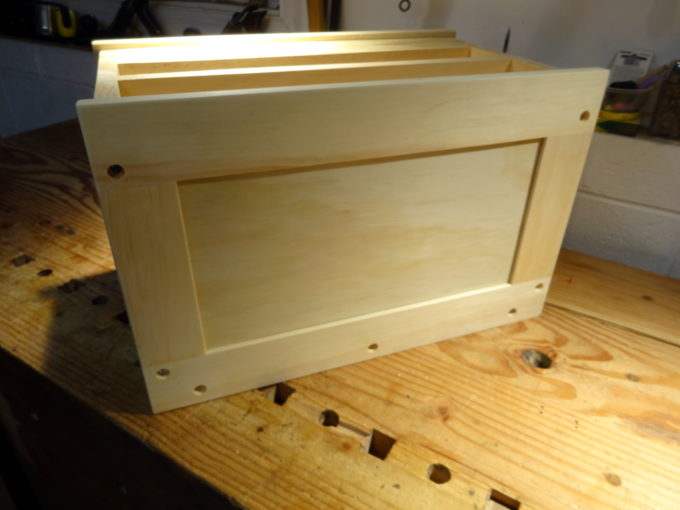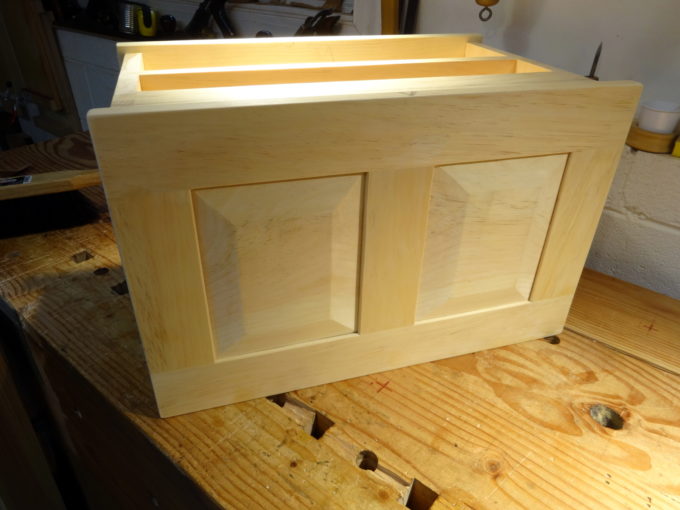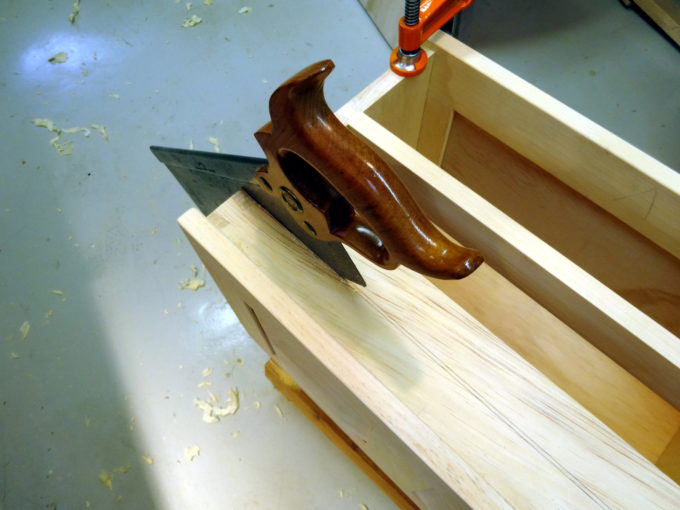 The top and bottom use frame and panel construction. The dimensions, 19 inches by 12 inches, are at the small end of needing this type of construction for managing wood movement. Yet it was fun to do them this way.
The top and bottom use frame and panel construction. The dimensions, 19 inches by 12 inches, are at the small end of needing this type of construction for managing wood movement. Yet it was fun to do them this way.
The long rails were intentionally left over-long. Those tails sticking out were very practical for knocking the frame apart while fitting the pieces. And thanks to the previously mentioned mortise and tenon helpers, there was very minimal fitting needed.
The bottom panel is simple 1/4 inch plywood, and the assembly is glued and screwed to the carcass. The screw holes get plugged. The top uses raised panels, shaped from 5/8 inch thick material. The assembly is only glued to the top of the carcass. Instead of the full bull-nose that Paul Sellers prefers on his chests, I used a less severe round over.
After the glue set, the lid is freed from the rest of the chest by sawing all around. The task looks scary, but was frighteningly easy. ( I had just sharpened that 150 year old Richardson saw. ) A few swipes with the plane cleaned up the kerf marks with minimal loss of material.



Looking good Bob! I’m liking this scaled down version and your execution is super clean.
Thanks Greg!
As you know well, “super clean” comes from being slow and careful … and for me avoiding web-like structures of dozens of pieces. 🙂